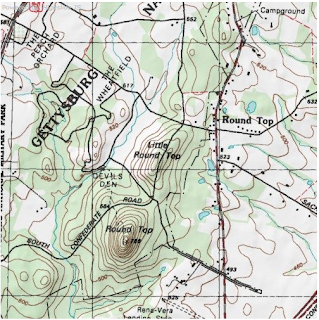Authors: John P. Sullivan and Adam Elkus
Publication: Red Team Journal
Date: July 2010
In a 2010
article in the Red Team Journal, John Sullivan and Adam Elkus outline their
view on a style of red teaming they refer to as Adaptive and Analytic red teaming.
The
authors first discuss the foundations of red teaming. They cite Schelling, who believes
that red teaming is an approach to combat the “poverty of expectations” where “the
danger is not that we shall read the signals and indicators with too little
skill; the danger is in a poverty of expectations – a routine obsession with a
few dangers that may be familiar rather than likely.”
Adaptive
red teaming, the authors say, “involves an iterative range of analytical and physical
approaches to understanding an adversary.” The authors suggest that these new
methods for red teaming are valuable for conducting analysis on
counterterrorism, counterinsurgency, and counterviolence. The authors
furthermore state that analytic red teaming is an approach to thinking in an adversarial
manner, in this case a terrorist or opposing force (OPFOR). The idea behind analytic
red teaming is to get an “enhanced understanding of
the groups particular driving factors strategic goals, leadership and decision-making
dynamics and processes, operational capabilities and rationales, organizational
dynamics and behaviors, adaptive capacities, etc. and their corollary and
derivative operations.” Put simply, the goal is to understand the specified
adversary’s “mindset” (ideology, strategic agenda, leadership) and the adversary
operational behaviors (capabilities, modus operandi, targeting preferences). The premise for the article rests on the idea that there is a larger spectrum of threats through which to use red teaming than just Islamic terrorism, which has drawn a majority of the focus of military, intelligence, and law enforcement organizations. Sullivan and Elkus believe that there are a variety of threats that are potential risks to public safety. While the authors mention some specific examples, they use the title “black blocs” as a catch-all concept for such anarchic or potentially violent groups. To protect against such groups, Sullivan and Elkus argue new the concepts kill chain, order of battle, and Design can enhance analytic red teaming in practice.
The authors describe the kill chain model as “the process of assembling weapons and personnel in place, conducting reconnaissance and dry runs, and then carrying out the act itself.” Sullivan and Elkus argue that by following the adversary’s necessary courses of action and tools required through a series of decision trees, with branches of tasks and subtasks, kill chain can produce data (of trends and potential) that can be used to test the adversary’s capabilities. The authors use an example of a black bloc to highlight the use of kill chain. The authors suggest that kill chain is an additional method that can highlight indicators of attack and vulnerabilities in an adversary’s command and control, by applying different network types.
Order of battle is a method used by the military to “displays the enemy’s organization and disposition” and denote “different types of units, equipment, and axes of advance…to predict the behavior of these units.” Sullivan and Elkus believe that “ORBAT analysis can be used to give teeth to analysis of the kill chain.” ORBAT’s feed into the kill chain, giving more information about the adversary’s cell to cell capabilities. An example of ORBAT used is in free-playing tactical decision-making games which theoretically tests how a unit can adapt to real-time tactical scenarios when there is “no right answer.” An example of such games in the real world is the training that Army units go through at the National Training Center.
Design is a method that was developed by the Army School of Advanced Military Studies to “frame a problem creatively prior to solving it.” Design frames the operational environment, frames the problem, and provides an operational approach to push the problem to an acceptable resolution. The process occurs concurrently with the planning of the operation at hand. The authors believe this process can be used to challenge assumptions on longer-term issues that are more strategic in nature, like risk management and risk analysis. The authors suggest that Design can aid in better defensive measures against threats like Al-Qaeda and terrorism, writ-large. They cite the examples of the German Red Army and Irish Republican Army as examples.
In conclusion, the authors argue that by extending red team analysis with new methods, we “can help diagnose threats, vulnerability and risk, and point the way toward a better means of providing security and addressing emerging threats.” These methods can be used to prevent terrorist attacks or be used to refine prevention and deterrence activities.
Critique: The authors have a firm knowledge of alternative methods that could be used to enhance red team analysis. If I am not mistaken, the idea of the kill chain and ORBAT has, in a way, been incorporated into targeting analysis which is a key intelligence activity in the war against terror. Arguably, these methods have been effective. Otherwise it’s hard to see how these forms of analysis have been used inside the intelligence, military, and law enforcement arenas. Kill chain is a logical and practical method that has a lot of utility in all areas. ORBAT is only practiced by the military. ORBAT, and by extension IPB, is a specialized practice and is unlikely to be used outside military settings. Intelligence operations likely incorporate such thinking but in an unstructured way. Based on the article, I see no utility to Design that isn’t already served by the previous two methodologies.
Link to article: https://redteamjournal.com/papers/RTJ_Occasional_Paper_01_July_2010.pdf






